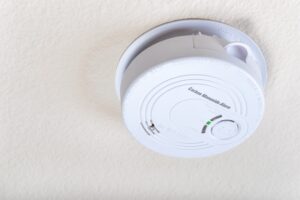As the cold winds of winter weave their way through the trees, our reliance on the trusty furnace becomes ever more evident. Yet, amid the comforting warmth it provides there’s a potential threat that often goes unnoticed. A problem that starts with needing furnace repair in Peachland, BC, and if left unchecked could escalate to a fatal threat. Let’s shed light on this silent danger. We will explore the signs, causes and most importantly the actions you can take to make sure that your home remains a safe space.
The Silent Threat
Deep within the heart of your home your furnace works tirelessly to keep you warm. A carbon monoxide leak is a silent threat that can go undetected and potentially lead to severe consequences if not addressed quickly. Carbon monoxide is a colorless, odorless gas that when inhaled in large amounts can be fatal.
Signs of a Carbon Monoxide Leak
- CO poisoning often manifests with persistent headaches that may not be alleviated by over-the-counter medications.
- It can be accompanied by nausea or dizziness, especially when you’re at home.
- If you find yourself experiencing unexplained shortness of breath, it’s important to consider the possibility of a leak.
- CO poisoning can mimic flu-like symptoms, including fatigue, weakness and muscle aches.
- During regular furnace operation, the flame should burn blue. A yellow flame may indicate incomplete combustion, leading to the production of carbon monoxide.
Causes of Carbon Monoxide Leaks
The heat exchanger is an important part of your furnace. Over time, it can develop cracks that allow CO to escape into your home. Furnaces that are not properly maintained may experience incomplete combustion. This can lead to the production of carbon monoxide. Obstructed vents or chimneys can hinder the proper expulsion of combustion gases and as a result, increase the risk of CO buildup. Finally, malfunctions in the furnace’s exhaust system can contribute to the release of carbon monoxide.
Taking Action
The first line of defense against carbon monoxide leaks is a reliable CO detector. Install detectors in key areas of your home, particularly near bedrooms and make sure that they are regularly tested. On top of this, you can schedule regular maintenance and inspections for your furnace.
A qualified HVAC professional can identify potential issues, including a cracked heat exchanger before these issues escalate. Also, make sure that vents and chimneys are clear of debris and obstructions. Proper ventilation is important for the safe operation of your furnace.
If your furnace is reaching the end of its lifespan, you should consider investing in a new, more efficient model. Modern furnaces come equipped with safety features to minimize the risk of carbon monoxide leaks.
The warmth provided by your furnace should be comforting, not accompanied by the hidden threat of carbon monoxide. Stay vigilant and be attuned to potential signs of CO exposure. You should prioritize regular maintenance to keep your home safe.

